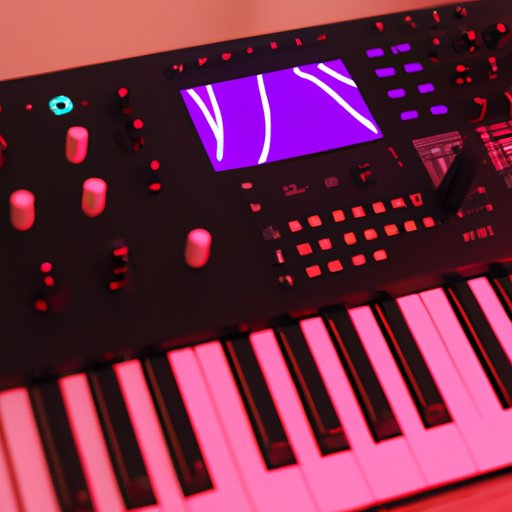Introduction
If you’re interested in music production, you’ve probably heard the term MIDI thrown around. MIDI, which stands for Musical Instrument Digital Interface, has become an integral part of the music industry. In this article, we’re going to explore what MIDI is, how it works, and its practical applications in music production.
Basic Functions of MIDI
At its core, MIDI is a messaging protocol that allows electronic devices to communicate with each other. In the context of music production, MIDI is used to send information about musical notes, channels, and controllers between different devices.
MIDI notes refer to the musical pitches that are played. These notes are assigned a number value between 0-127. For example, a middle C note would be assigned the number 60.
MIDI channels allow multiple instruments or devices to communicate with each other. Each device is assigned a specific channel, and MIDI messages can be sent on that channel to control the device.
MIDI controllers refer to the various parameters that can be controlled using MIDI messages. This includes things like volume, pitch, and modulation.
In music production software, MIDI data is represented as a series of notes, each with a specific pitch and duration. This data can be edited and manipulated using a MIDI editor.
How MIDI Works
MIDI messages are sent and received using a MIDI cable, which connects two devices together. When a message is sent, it contains information about the note, channel, and controller being used.
When a MIDI message is received, the device will interpret the message and use it to control its output. For example, if a MIDI message is sent to a synthesizer, the synthesizer will play the corresponding note and adjust its settings based on the controller data.
Practical Applications of MIDI
MIDI has a wide range of applications in the music industry. In music production, MIDI is used to control virtual instruments and software synthesizers. This allows producers to create complex arrangements without needing to record live instruments.
MIDI is also commonly used in live performance. Many musicians use MIDI controllers to trigger samples and control effects in real-time. This allows for a more dynamic and expressive performance.
In addition, MIDI is used extensively in recording studios. By using MIDI to control equipment, engineers can easily edit and manipulate recordings without needing to re-record live instruments.
Popular MIDI controllers include keyboards, drum pads, and electronic drum kits. There are also MIDI guitars and wind instruments available for musicians who prefer those types of instruments.
Conclusion
Overall, MIDI is an essential tool for anyone interested in music production. By understanding the basics of MIDI, you can unlock a world of creative possibilities. Whether you’re a beginner or an experienced producer, MIDI will play a crucial role in your music-making process.
Key takeaways include understanding MIDI notes, channels, and controllers, as well as how MIDI messages are sent and received. By mastering these concepts, you’ll be well on your way to creating amazing music with MIDI.
